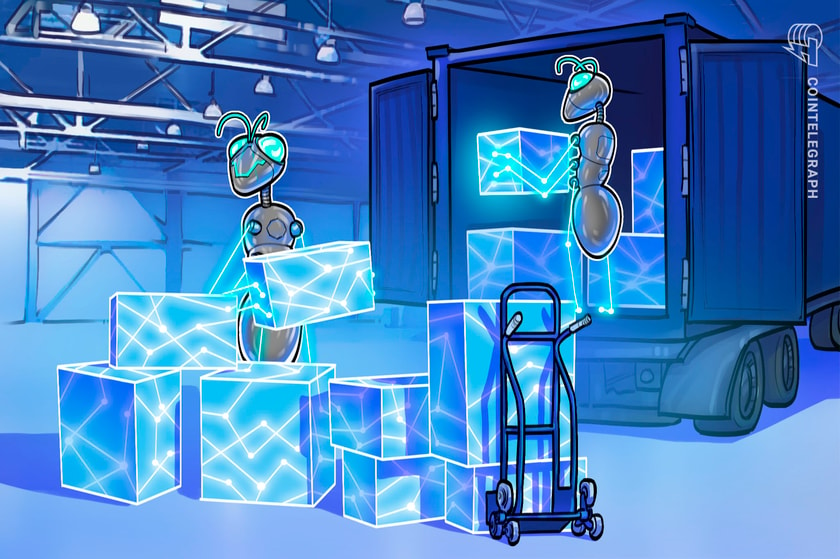9 tips for a food business considering blockchain for its supply chain

With the right focus and plan, blockchain can add real value to the food and agricultural industry’s supply chain.
Supply chain management has become a complicated issue for many industries in recent years — none more so than food and agriculture. When you’re in the business of ensuring essential, but perishable, goods get to where they’re supposed to go in a reliable and timely fashion — and are of the quality consumers deserve and expect — an accurate, real-time tracking system is invaluable.
That’s why some food and agricultural businesses are looking into using blockchain technology. With its clear transparency and traceability advantages, verifying the origin, handling and quality of food products is easier for all parties. A business that publicizes its use of blockchain technology for supply chain management can also earn the trust of consumers who are focused on issues like food safety and sustainability.
However, leveraging blockchain tech is not as simple as purchasing a software suite. To achieve the full benefits and see ROI, food and agricultural businesses would be wise to first learn best practices and smart strategies for getting started. Below, nine members of Cointelegraph Innovation Circle share their tips for food and agricultural businesses that are starting to explore blockchain technology for supply chain management.
Start with clarity on your objectives
Blockchain can enhance traceability, transparency and efficiency, but it’s vital to understand the specific pain points you’re addressing. Tailor the solution to your unique supply chain needs, ensuring both scalability and real-world applicability. – Maksym Illiashenko, My NFT Wars: Riftwardens
Emphasize simplicity
Incorporating the “seamless principle” and “keep it simple, stupid” approaches is an excellent way to implement blockchain solutions in the food and agricultural industry. This combined approach emphasizes not only simplicity and user-friendliness, but also the importance of smooth integration and a frictionless user experience, all while enhancing transparency, efficiency and trust in the supply chain. – Myrtle Anne Ramos, Block Tides
Prioritize transparency
Industries with extensive supply chains must prioritize transparency. Guarantee that your blockchain system offers real-time, unchangeable records that are accessible to all involved parties. This transparency fosters consumer trust, verifies product authenticity and bolsters traceability — all pivotal elements for an efficient and trustworthy food supply chain. – Sheraz Ahmed, STORM Partners
Start with a single, specific process
Start small and identify a specific process that can benefit from blockchain technology — like traceability, transparency, food safety or reducing fraud. Blockchain solutions are most effective when multiple participants in the supply chain are involved. Engage with suppliers, distributors, retailers and other relevant parties to ensure their buy-in and participation in the implementation. – Tammy Paola, Zerocap
Take an accessible, inclusive approach
Ensure all participants, from farmers to retailers, have the necessary technological tools and training. Success hinges on each link in the chain actively participating and accurately inputting data, thus maintaining a transparent and traceable system. An inclusive, tech-accessible approach is crucial for the integrity and effectiveness of the blockchain solution. – Tomer Warschauer Nuni, Kryptomon
Implement blockchain where independent validation is most beneficial
Blockchain differs from existing methods of sending data to a database or dashboard because the value added is — or should be — independent validation (that is, mutual assurance the data has not been changed). By switching to unbiased proofs instead of records that could be falsified, chain of custody and provenance can be traced quickly. Implement blockchain where stakeholders agree that’s a benefit. – Stephanie So, Geeq
Understand errors will be made by humans, not the blockchain
The blockchain is unlike traditional systems and, as a result, it needs to be nurtured in a way that is beneficial for all parties. This means that there can be many complications, and within the food and agricultural industry, the margin for error is even smaller. Therefore, communication and understanding from all involved are vital, as any error will not be blockchain-related, but will instead be human error. – Ilias Salvatore, Flooz XYZ
Know that several years of testing will be required
One successful blockchain project is the IBM Food Trust, which provides verifiable details about the safety and sustainability of sourced food. One major thing we can learn from this project is that it takes several years of testing (in this case, from 2017 to 2023) to make sure that the solution accurately addresses a problem. This approach reduces the risk of failure post-launch. – Abhishek Singh, Acknoledger
Ensure foodways remain intact
Many pixels have been exhausted theorizing how blockchain technology could liberate industries and supply chains. However, ensuring digital assets actually account for the livestock or crops they represent is paramount to mitigating the dire impact subversion could have on at-risk populations. Therefore, those aiming to disrupt agricultural industries must ensure our foodways remain intact. – Oleksandr Lutskevych, CEX.IO
This article was published through Cointelegraph Innovation Circle, a vetted organization of senior executives and experts in the blockchain technology industry who are building the future through the power of connections, collaboration and thought leadership. Opinions expressed do not necessarily reflect those of Cointelegraph.

